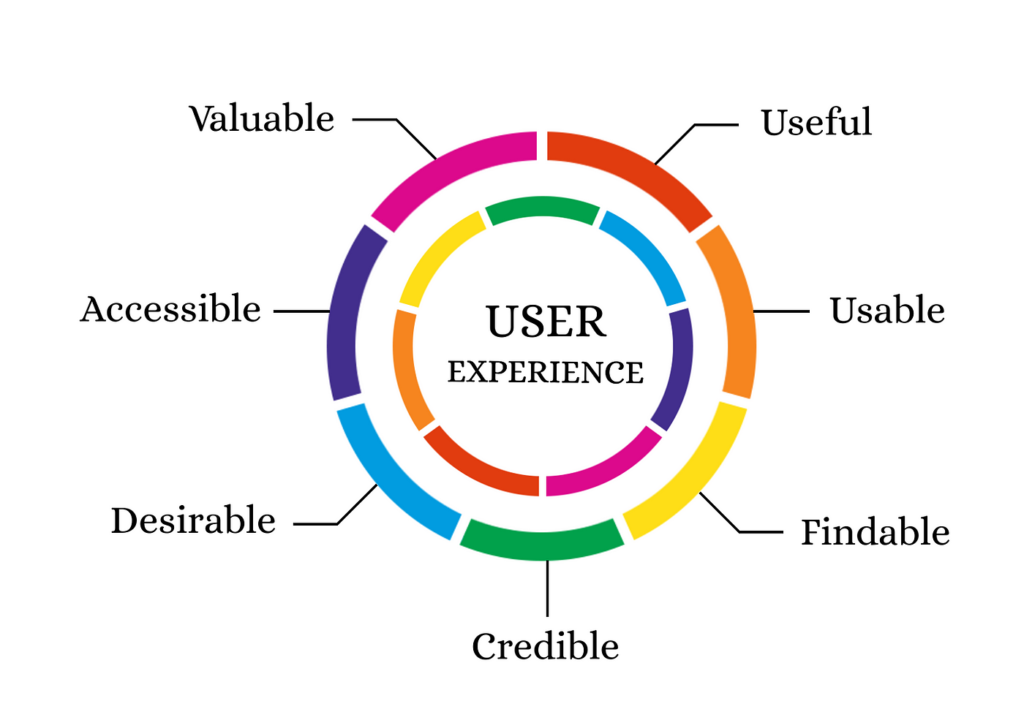In the rapidly evolving world of digital technologies, creating an effective website goes beyond just having attractive design and powerful features. An essential element that can make or break a website’s success is its User Experience (UX). While businesses and organizations focus on aesthetics, functionality, and content, they must also prioritize UX to ensure users have a seamless and engaging experience on their platforms. But why is User Experience (UX) so important in web development?
In this article, we will explore the profound influence that UX has on web development. We will look at how good UX design impacts user satisfaction, customer loyalty, and ultimately, a company’s bottom line. Additionally, we will explore how web developers can enhance UX on their websites and discuss the key principles that contribute to a positive user experience.
Understanding User Experience (UX) and Its Role in Web Development
User Experience (UX) refers to the overall experience that users have when interacting with a website or application. It encompasses every aspect of the interaction, from how intuitive the site is to use, to how visually appealing it is, and how quickly it loads. UX design focuses on optimizing these elements to ensure users can navigate the website or application easily and effectively.
Web development, on the other hand, involves creating and maintaining websites through coding, design, and programming. While UX is a critical part of web design, it plays a different role than traditional development. A developer’s task is to bring the design to life through code, but they must do so with UX principles in mind. This is because no matter how great the content or features are on a site, if users can’t easily access and interact with them, they are likely to abandon the site and seek alternatives.
A seamless, positive UX can lead to greater user engagement, higher conversion rates, and better overall performance for a website. Websites that are difficult to use or navigate often frustrate users, leading to high bounce rates and low retention rates. Therefore, web developers must give UX the attention it deserves to ensure their websites are not only functional but also user-friendly.
The Importance of User Experience (UX) in Web Development
Enhancing Usability and Accessibility
Usability is one of the main objectives of UX design. It involves making a website simple to use and ensuring that users can easily complete the tasks they came to do. This could mean finding a product in an online store, submitting a contact form, or reading blog content without any difficulty.
Good usability relies on factors such as:
- Clear navigation: Users should never feel lost or unsure of where to click next. A well-organized website with easy-to-understand navigation is crucial.
- Minimal load time: Speed is a significant factor in user experience. Slow-loading pages can frustrate users, causing them to leave before they’ve had a chance to explore your site.
- Responsive design: Websites should adapt to different screen sizes and devices to provide a consistent experience for all users, regardless of whether they’re browsing on a smartphone, tablet, or desktop computer.
When these aspects are carefully considered during the web development process, they contribute to a website that is not only easy to navigate but also accessible to all types of users. This can significantly improve the user’s satisfaction and increase the chances of them returning to the website in the future.
Improving User Engagement and Conversion Rates
User engagement is closely tied to how well a website meets the expectations and needs of its visitors. A website with excellent UX is likely to encourage users to stay longer, explore more pages, and engage more with its content or services. On the flip side, poor UX can drive users away quickly, even if the website’s offerings are valuable.
One of the most critical goals of web development is to drive conversions. Whether a conversion means signing up for an email list, making a purchase, or downloading an app, it is essential that a website facilitates these actions through an intuitive and pleasant experience. A well-designed user interface (UI) that simplifies the conversion process and reduces friction can significantly increase conversion rates.
For example, streamlining checkout processes or making contact forms easy to fill out are small improvements that can lead to big results. By improving the flow of actions on the website, you make it easier for users to take the desired steps, ultimately leading to higher conversion rates.
Building Customer Trust and Loyalty

In today’s competitive market, gaining customer trust is more important than ever. A website with poor UX may leave users feeling frustrated, confused, or even unsafe. If a website has broken links, confusing navigation, or slow load times, users are likely to feel that the site is unprofessional or unreliable. This can lead to a lack of trust, which is often enough to drive users away permanently.
On the other hand, a website that delivers a smooth, intuitive experience makes users feel confident about their visit. Trust is built when users can easily find what they’re looking for, navigate the site with ease, and know that their personal information is secure. UX plays a key role in establishing that trust and encouraging repeat visits, leading to customer loyalty.
Boosting SEO Performance
Search Engine Optimization (SEO) is another reason why UX is important in web development. Google and other search engines use algorithms to determine how relevant and user-friendly a website is. One of the key factors that search engines consider when ranking pages is the user experience. Websites with poor UX are more likely to have high bounce rates, slow load times, or difficult navigation, all of which negatively impact SEO.
Conversely, websites that are designed with good UX principles, such as fast load times, easy navigation, and mobile responsiveness, tend to rank better on search engine results pages (SERPs). A better rank in search results means more organic traffic, which ultimately leads to increased visibility, more potential customers, and more opportunities for monetization.
Reducing Development and Maintenance Costs
While creating an optimized UX may require an initial investment of time and resources, it can save a company money in the long run. A well-designed website is easier to maintain and update, as users are less likely to encounter issues that require constant troubleshooting or fixing. A website with good UX also requires fewer customer support interventions, as users can navigate the site and solve problems on their own.
Furthermore, by ensuring that the website is optimized for a wide variety of users and devices, web developers can avoid costly redesigns in the future. Good UX design takes future scalability into account, ensuring that the website remains user-friendly as it evolves over time.
Enhancing Mobile User Experience (UX)
With mobile web usage surpassing desktop usage in recent years, optimizing UX for mobile devices is more critical than ever. A website that is not optimized for mobile can result in a poor user experience and lost opportunities. In fact, a study by Google found that 53% of mobile users abandon a site if it takes more than three seconds to load.
Responsive web design is a fundamental aspect of mobile UX. It ensures that the website automatically adjusts its layout and content to fit the screen size of the device being used. This creates a seamless experience for users, whether they’re on a smartphone, tablet, or desktop computer.
Key Principles for Optimizing User Experience (UX)
Consistency
Consistency is crucial in UX design. Users should feel familiar with the layout and structure of your website, whether they are browsing for the first time or returning after a long absence. Consistent use of colors, fonts, buttons, and design elements ensures that users can quickly understand how to interact with the site.
Clarity and Simplicity
Simplicity is the key to creating a website that users can easily navigate. A cluttered, overwhelming website can confuse users and make it difficult for them to find what they’re looking for. Web developers should aim to design clean, straightforward pages with clear calls to action. Minimizing unnecessary elements and focusing on what is truly important will enhance the overall user experience.
Speed and Performance
Website speed is one of the most critical factors affecting UX. Slow-loading websites lead to frustrated users and can negatively impact search rankings. Developers should focus on optimizing images, scripts, and other assets to ensure that the website loads quickly on all devices.
Feedback and Interaction
Providing users with clear feedback when they interact with a website is essential to creating a positive UX. Whether it’s a visual cue to confirm an action or a subtle animation when a button is pressed, these small details contribute to an intuitive and enjoyable experience. Feedback reassures users that their actions have been recognized and are being processed.
User-Centered Design
Finally, the best UX designs always prioritize the needs of the user. When creating a website, developers should constantly think about the user’s journey and how they will interact with different elements. User-centered design ensures that the website meets the expectations of its visitors, leading to a more satisfying experience.
Conclusion: The Vital Role of UX in Web Development
In conclusion, User Experience (UX) is a fundamental aspect of web development that cannot be overlooked. A website’s success depends not only on its features and functionality but also on how easily users can navigate and interact with it. Good UX design improves usability, enhances engagement, builds trust, and can even boost SEO performance, ultimately leading to higher conversion rates and greater customer satisfaction.
By focusing on the key principles of UX, web developers can create websites that provide seamless, enjoyable experiences for users. This not only benefits the users but also helps businesses build brand loyalty, increase revenue, and maintain a competitive edge in the digital world.
So, whether you are designing a new website or improving an existing one, always keep UX in mind. It is, without a doubt, one of the most important elements in web development today.
This blog post covers the importance of User Experience (UX) in web development, provides an in-depth analysis of its benefits, and offers practical tips for optimization—all designed with Google AdSense monetization in mind. The content is structured for readability and incorporates key principles that encourage engagement, which will ultimately help you maximize monetization opportunities through AdSense.

